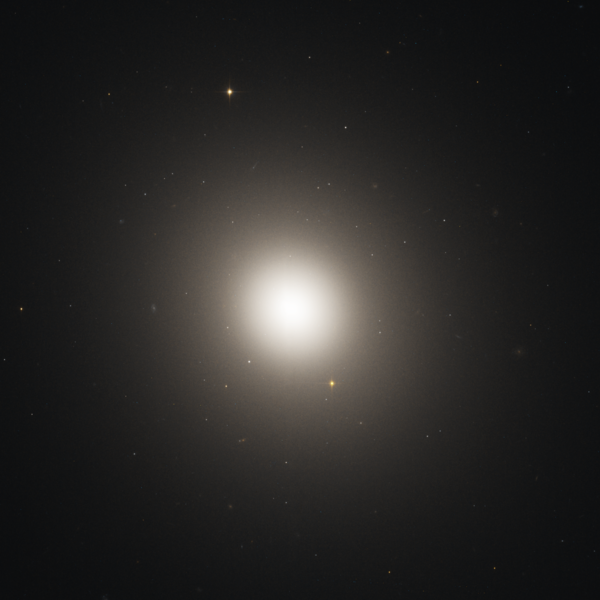File:M105 (23661262488).png

Original file (2,048 × 2,048 pixels, file size: 5.13 MB, MIME type: image/png)
Captions
Captions
Summary edit
| DescriptionM105 (23661262488).png |
M105 is an elliptical galaxy 32 million light-years away in the constellation Leo. It is the largest elliptical in the Messier catalog that is not a member of the Virgo cluster of galaxies. M105 does, however, belong to the M96 (or Leo I) Group, which includes neighbors M95 and M96 as well as several other fainter galaxies. Charles Messier’s colleague Pierre Méchain discovered M105 in 1781 just a few days after locating M95 and M96. Yet M105 was not originally included in Messier’s catalog. It was added in 1947 after astronomer Helen S. Hogg found a letter written by Méchain describing the galaxy. This Hubble image of M105 was taken in near-infrared and visible light. Like most elliptical galaxies it appears rather featureless and inactive. However, Hubble observations surprised astronomers by revealing young stars and star clusters in M105, indicating that star formation is still taking place in what was thought to be a “dead” galaxy no longer capable of giving birth to new stars. Other Hubble observations measured the speeds of stars moving around the center of the galaxy, which demonstrated that a supermassive black hole resides at M105’s core. Best observed in April, M105 has an apparent magnitude of 10.2 and can be spotted with a small telescope. Large telescopes will uncover two fainter galaxies (NGC 3384 and NGC 3389) close to the bright elliptical. For more information about Hubble’s observations of M105, see: <a href="http://hubblesite.org/news_release/news/1997-01" rel="nofollow">hubblesite.org/news_release/news/1997-01</a> Credit: NASA, ESA, STScI, and C. Sarazin (University of Virginia) |
| Date | |
| Source | M105 |
| Author | NASA Hubble Space Telescope |
Licensing edit
| This image was originally posted to Flickr by NASA Hubble at https://flickr.com/photos/144614754@N02/23661262488 (archive). It was reviewed on 13 July 2018 by FlickreviewR 2 and was confirmed to be licensed under the terms of the Public Domain Mark. |
13 July 2018
| Public domainPublic domainfalsefalse |
| This file is in the public domain in the United States because it was solely created by NASA. NASA copyright policy states that "NASA material is not protected by copyright unless noted". (See Template:PD-USGov, NASA copyright policy page or JPL Image Use Policy.) |  | |
 |
Warnings:
|
File history
Click on a date/time to view the file as it appeared at that time.
| Date/Time | Thumbnail | Dimensions | User | Comment | |
|---|---|---|---|---|---|
| current | 15:32, 13 July 2018 |  | 2,048 × 2,048 (5.13 MB) | Hiàn (alt) (talk | contribs) | Transferred from Flickr via #flickr2commons |
You cannot overwrite this file.
File usage on Commons
The following page uses this file:
Metadata
This file contains additional information such as Exif metadata which may have been added by the digital camera, scanner, or software program used to create or digitize it. If the file has been modified from its original state, some details such as the timestamp may not fully reflect those of the original file. The timestamp is only as accurate as the clock in the camera, and it may be completely wrong.
| Horizontal resolution | 28.35 dpc |
|---|---|
| Vertical resolution | 28.35 dpc |